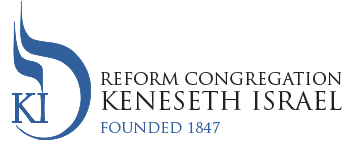This week’s Torah portion, Toldot (Genesis 25:19), reports on the life of the twins, Jacob and Esau, born to Isaac and Rebecca and their complex family dynamics. The Hebrew word Toldot is generally translated as “generations” but literally is closer to “descendants” in English but can also be used as the equivalent of “history” in its broadest sense as in Toldot Yisrael or Jewish History. A familiar synonym for Toldot is Dor as in “L’Dor va’Dor,” a favorite phrase from the Sanctification prayer (Kedushah) and a positive value statement about generational continuity in the Jewish tradition. The same aspiration can already be found repeatedly in the Hebrew Bible.
In antiquity, the idea of a generation was generally understood in terms of the family but in modern times its meaning expanded to include whole cohorts of people who were born and lived at the same time and shared common experiences and beliefs. Probably the first philosopher to probe the deeper implications of a “social generation” was the French philosopher, Auguste Comte (1798-1857) whose work was formative in the development of sociology and also had a profound effect on the early theologians who developed what we call Conservative Judaism or, in Comtian terms, Positive-Historical Judaism. In a series of texts written between 1830-1842, Comte essentially argued, “social change is determined by generational change and in particular between successive generations.” In other words, Comte and other modern thinkers literally reversed the meaning of “L’Dor va-Dor!”
If we stop and think about “generations” in our time, Comte’s reversal of the meaning of generation from continuity to discontinuity is not really a surprise. Most familiar is the 1960s idea of a “generation gap” which pitted an earlier “square generation” against an emerging “hip generation” of youngsters with long hair, anti-puritanical values and psychedelic motifs in their art. In fact, generational conflict was typical of the whole 20th century from the Lost Generation (1883-1900) to the Greatest Generation (1901-1927) to the Silent Generation (1928-1945) to the Baby Boomers (1948-1984). More recently, it is commonplace to talk about Generations X, Y (Millennials), Z (Zoomers) and currently, Generation Alpha (early 2010s to the present). Of course, as Sir Isaac Newton said in his Third Law, “to every action, there is an equal and opposite reaction” which produced the “Silent Majority,” the “Tea Party” and “Trumpism.” Viewed broadly then, “generationalism” is not discontinuous but also includes the possibility of not only inter-generational conflict but also intra-generational polarization.
Moving beyond the United States, there are significant generational differences in countries like Israel (Pre-State citizens versus Sabras), German Generations (Nazi Era, Cold War, Post Cold War) and Vietnam (French Period, Vietnam War and several generations post-War). The same is true of just about every country on the planet in recent years.
A whole different way of looking at “generations” can be attributed to the American historian, Marcus Lee Hansen (1892-1938) who mostly taught at the University of Illinois at Urbana-Champaign. His magnum opus, The Atlantic Migration, 1607-1860, was published posthumously in 1940 and, the following year, won the Pulitzer Prize for History. Basically, Hansen maintained that the second generation of an immigrant family is focused on Americanizing and the third generation becomes interested in its ancestral roots, in Hansen’s case, Norway.
It is easy to apply Hansen’s generation theory to the American Jewish experience. The first generation immigrated and worried about the practical things of life like earning a living and learning a new language. By contrast, the second generation wanted to be as American as possible. The third generation, in turn, becomes interested if not nostalgic about its roots and is inspired by Broadway shows and movies like Fiddler on the Roof. The first generation did not want to talk about Russia because it was so bad, they left. The second generation did not want to talk about Russia because it was not America and the third generation wanted to know more about Bubbe and Zayde and prior generations, which shaped them and their Yiddishkeit. Thereafter, a kind of cultural-generational atrophy sets in and the past recedes ever deeper into the past.
So what are we to make of the meaning of “from generation to generation” in our own time? It is easy to recognize the power of discontinuity generationally in Jewish life but what are the continuities, which will actually preserve Jewish life for generations to come. Orthodox Judaism largely is betting on cultural resistance. Reform argues that cultural adaptation is the best path forward. Zionism posits that reconstituting Jewish identity, as a national, political entity is realistic and durable in the modern world. In any event, for those of us who believe that maintaining Jewish identity and Judaism is an essential task, we have to take the challenge of L’Dor va’Dor very seriously and not allow the flame of Jewish life to be extinguished in our own lives, the lives of our children and our grandchildren. As this week’s Torah portion shows, even thousands of years ago the path forward was uncertain and, ultimately, unexpected.
Shabbat Shalom,
Rabbi Lance J. Sussman, Ph.D.
